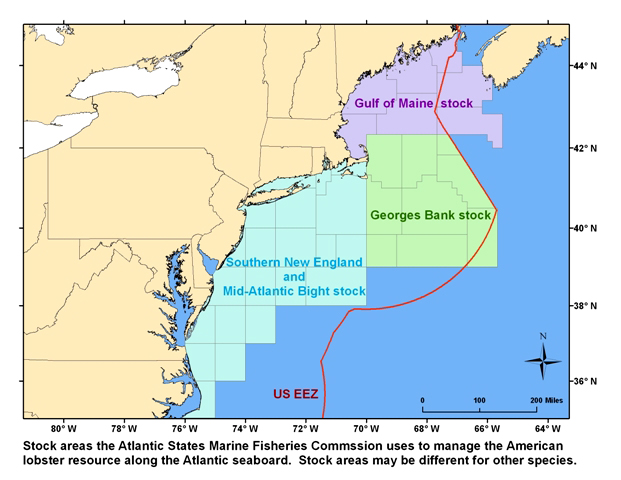Interstate Marine Fisheries Management
Every commercially and recreationally important marine fish stock in Long Island Sound is fished in more than one state, and most in federal waters as well. In order to coordinate effective management programs, Marine Fisheries Division staff are active members of two marine fishery management organizations intended to coordinate cooperative, interjurisdictional (interstate, state/federal) resource management activities: The Atlantic States Marine Fisheries Commission and the New England Fishery Management Council.
The Atlantic States Marine Fisheries Commission is an interstate compact authorized by Congress in 1942 "to promote the better utilization of the fisheries, marine, shell and anadromous, of the Atlantic seaboard by the development of a joint program for the promotion and protection of such fisheries." The Commission is responsible for preparation of fishery management plans for migratory or shared fishery resources, which occur predominantly in states' waters. Examples of species managed include American lobster, striped bass, bluefish, summer flounder, winter flounder, weakfish, and shad. For the latest information on the Commission visit their web site: www.asmfc.org

The New England Fishery Management Council is one of eight regional councils established by Congress in 1976 to develop management plans for fishery resources occurring predominantly in the U. S. Exclusive Economic Zone (the "200 mile limit"). Connecticut is one of five member states of the New England Council, a body comprised of government officials, and persons knowledgeable about the fisheries who are appointed by the Secretary of Commerce from lists submitted by the Governors of the New England coastal states. To learn more about Council actions visit their web site: www.nefmc.org
The principal species being managed under New England Council plans are the multi-species groundfish complex (cod, haddock, yellowtail flounder, winter flounder, pollock, whiting, and others), sea scallops, Atlantic herring and monkfish. Connecticut is also involved with the Mid-Atlantic Fishery Management Council, which is responsible for developing fishery management plans for many summer visitors to our waters including summer flounder, scup, and squid. Visit their web site: www.mafmc.org to learn more about Mid-Atlantic Council business. There are a number of species for which jointly-prepared plans have been developed between Councils and the ASMFC, notably summer flounder, scup and bluefish.
Content last updated March 2020

